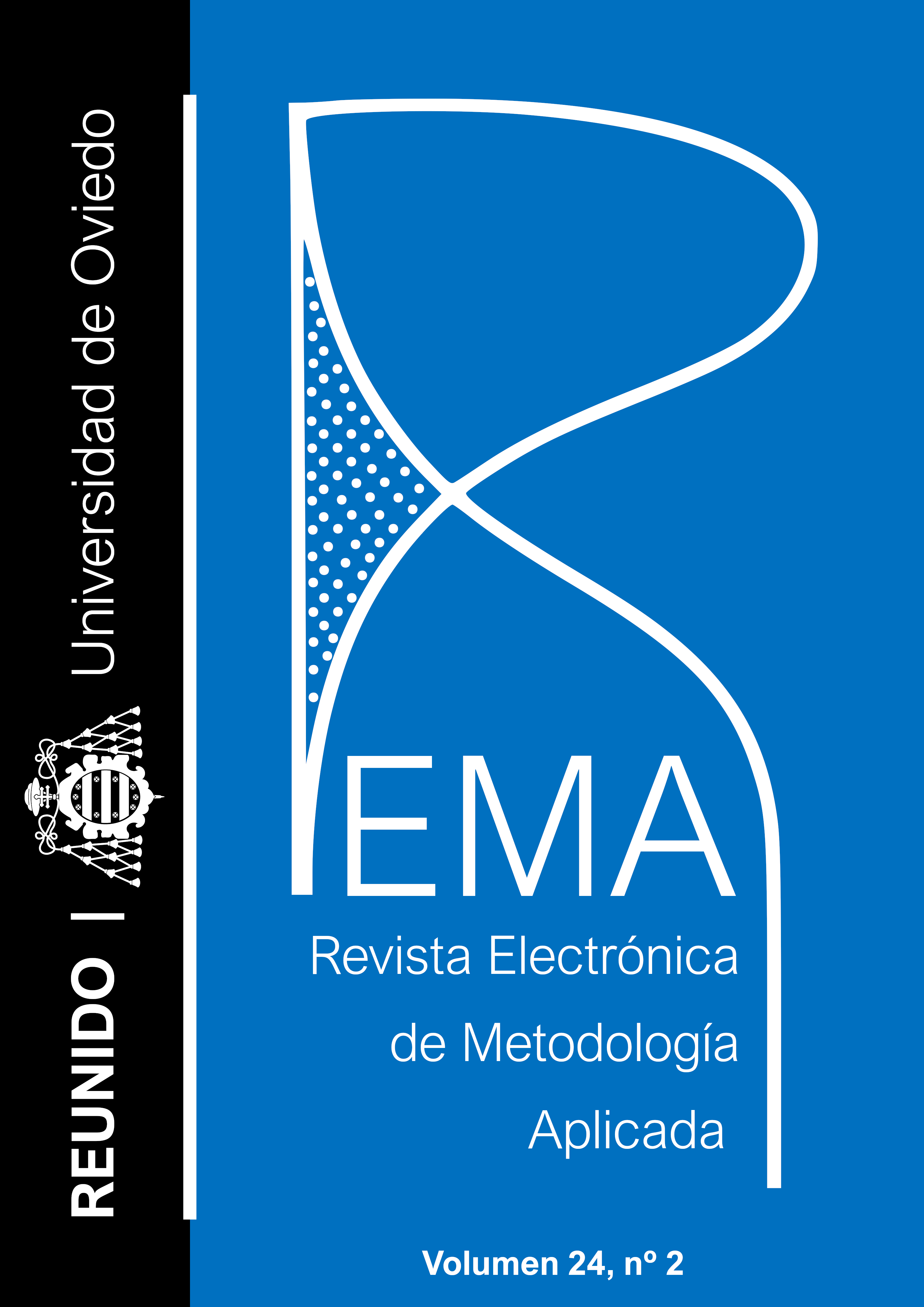Resumen
La sonificación es una herramienta de representación y análisis que emplea el sonido como conductor de una serie de datos. La trascripción sonora empleando frecuencia, intensidad y timbre permite expresar diferentes magnitudes y matices de un conjunto de observaciones. En el presente texto se mostrarán los fundamentos de la herramienta de la sonificación así como sus usos más comunes en psicología, entre los que se encuentran el aprendizaje motor, la discriminación perceptiva y representación de respuestas en ciertas patologías que conectan con el protagonismo del ritmo como factor imprescindible en la organización de lo orgánico. A través de la recopilación de la bibliografía existente se expondrán estas aplicaciones y sus posibilidades en otros campos de la psicología. A modo de ejemplificación, se propone una conversión sencilla de la representación gráfica de una curva normal en su versión auditiva. Como interpretación final, se destacarán las posibilidades del sonido como herramienta metodológica del análisis de datos, abriendo caminos interdisciplinares y multisensoriales en investigación.
Citas
Bergstrom, I., Seinfeld, S., Arroyo-Palacios, J., Slater, M. & Sanchez-Vives, M. V. (2014). Using Music as a Signal for Biofeedback. International Journal of Psychophysiology, 93(1), 140-149. https://doi.org/10.1016/j.ijpsycho.2013.04.013
Bigerelle M. & Iost A. (2000). Fractal dimension and classification of music. Chaos Solitons Fractals, 11 (14), 2179-2192.
Broadbent, D. E. (1958). Perception and communication. Oxford University Press.
Buehler, M. (2020). Nanomechanical sonification of the 2019-nCoV coronavirus spike protein through a materiomusical approach. ArXhiv.org. https://doi.org/10.48550/arXiv.2003.14258
Burdick, K.J., Jorgensen, S.K., Combs, T.N., Holmberg, M.O., Kultgen, S.P. & Schlesinger, J.J. (2020)
SAVIOR ICU: sonification and vibrotactile interface for the operating room and intensive care unit. Journal of Clinical Monitoring and Computing, 34 (4), 787-796. https://doi/10.1007/s10877-019-00381-1
Cairo, A. (08 de mayo de 2022). Sonifying data with TwoTone. http://www.thefunctionalart.com/2019/03/sonifying-data-with-twotone.html
Cusack, R. & Roberts, B. (2000). Effects of differences in timbre on sequential grouping. Perception & Psychophysics, 62(5), 1112–1120. https://doi.org/10.3758/BF03212092
Delogu, F., Belardinelli, M.O., Palmiero, M., Pasqualotto, E., Zhao, H., Plaisant, C. & Federici, S. (2006). Interactive sonification for blind people exploration of geo-referenced data: comparison between a keyboard exploration and a haptic-exploration interfaces. Cognitive Processing, 7, 178–179. https://doi.org/10.1007/s10339-006-0137-8
Diaz-Merced, W. L., Candey, R. M., Brickhouse, N., Schneps, M., Mannone, J. C., Brewster, S. & Kolenberg, K. (2012). Sonification of Astronomical Data. New Horizons in Time Domain Astronomy, 285, 133-136. https://doi.org/10.1017/S1743921312000440
Ecalle, J., Boisson, A., Labat, H., Versace, R. & Magnan A. (2021) Spatial sonification of letters on tablets to stimulate literacy skills and handwriting in 5 y-o children: A pilot study. Human Movement Science, 79,102844. https://doi.org/10.1016/j.humov.2021.102844
Edwards, A. D. N., Hunt, A., Hines, G., Jackson, V., Podvoskis, A., Roseblade, R. & Stammers, J. (2010). Sonification strategies for examination of biological cells. en E. Brazil (Ed.), 16th International Conference on Auditory Display (193–200). Georgia Tech Library.
Harkleroad, L. (2006). The math behind the music. Cambridge University Press.
Lautenschlaeger, G. (2018). Absences within and surrounding light-to-sound translations. Journal of Science and Technology of the Arts, 10(3), 3-13. https://doi.org/10.7559/citarj.v10i3.565
Kramer, G., Walker, B. N., Bonebright, T., Cook, P., Flowers, J., Miner, N., Neuhoff, J., Bargar, R. Barrass, S., Berger, J., Evreinov, G., Fitch, W.T., Gröhn, M., Handel, S., Kaper, H., Levkowitz, H., Lodha,S., Shinn-Cunningham, B., Simoni, M. & Tipei , S. (1999). The Sonification Report: Status of the Field and Research Agenda. Report prepared for the National Science Foundation by members of the International Community for Auditory Display. NM: International Community for Auditory Display (ICAD).
Marshall, A. T., & Kirkpatrick, K. (2015). Everywhere and everything: The power and ubiquity of time. International Journal of Comparative Psychology, 28, 26072.
Mihalas G.I., Andor, M. & Tudor, A. (2020). Adding sound to medical data. Studies in Health Technology and Informatics, 273, 38 – 53. https://doi.org.10.3233/SHTI200614
Neuhoff, J. G. (2011). Perception, Cognition and Action in Auditory Displays en T. Hermann, A. Hunt, & J. G. Neuhoff (Eds.), The Sonification Handbook (63-83). Logos Publishing House.
Oppici, L., Frith, E. & Rudd, J. (2020). A Perspective on Implementing Movement Sonification to Influence Movement (and Eventually Cognitive) Creativity. Frontiers in Psychology, 11, 2233. https://doi.org/10.3389/fpsyg.2020.02233
Sanderson, P.M., Liu, D. & Jenkins, S.A. (2009). Auditory displays in anesthesiology. Current Opinion in Anaesthesiology, 22 (6), 788-795. https://doi.org/10.1097/ACO.0b013e3283326a2f
Siegel, A. (2012). Random Variables: Working with Uncertain Numbers en A. Siegel, Practical Business Statistics (Sixth Edition, 155-186). Academic Press.
Tommasini, F.C., Evin, D.A., Bermejo, F., Hüg, M. X., Barrios, V. & Pampaluna, A. (2022) Recurrence analysis of sensorimotor trajectories in a minimalist perceptual task using sonification. Cognitive Processing, 23, 285–298. https://doi.org/10.1007/s10339-021-01068-9
Treisman, A. M. (1960) Contextual cues in selective listening. Quarterly Journal of Experimental Psychology, 12(4), 242-248. https://doi.org/10.1080/17470216008416732
Van Kerrebroeck, B. & Maes, P.J. (2021). A breathing sonification system to reduce stress during the COVID-19 pandemic. Frontiers in Psychology, 12. https://doi.org/10.3389/fpsyg.2021.623110
Walker, B. N. & Cothran, J.T. (2003). Sonification sandbox: a graphical toolkit for auditory graphs. Proceedings of the 2003 International Conference on Auditory Display.
Walker, B., N. & Nees, M. A. (2011). Theory of Sonification en T. Hermann, A. Hunt, & J. G. Neuhoff (Eds.), The Sonification Handbook (9-34). Logos Publishing House.
Yu, C. H., Qin, Z., Martin-Martinez, F. J. & Buehler, M.J. (2019). A self-consistent sonification method
to translate amino acid sequences into musical compositions and application in protein
design using AI. ACS Nano. 13(7), 7471–7482. https://doi.org/ 10.1021/acsnano.9b02180
Ziemer, T. & Schultheis, H. (2019). Psychoacoustic auditory display for navigation: an auditory assistance system for spatial orientation tasks. Journal on Multimodal User Interfaces, 13 (3), 205-218. https://doi.org/10.1007/s12193-018-0282-2

Esta obra está bajo una licencia internacional Creative Commons Atribución-NoComercial-CompartirIgual 4.0.
Derechos de autor 2022 R.E.M.A. Revista electrónica de metodología aplicada

